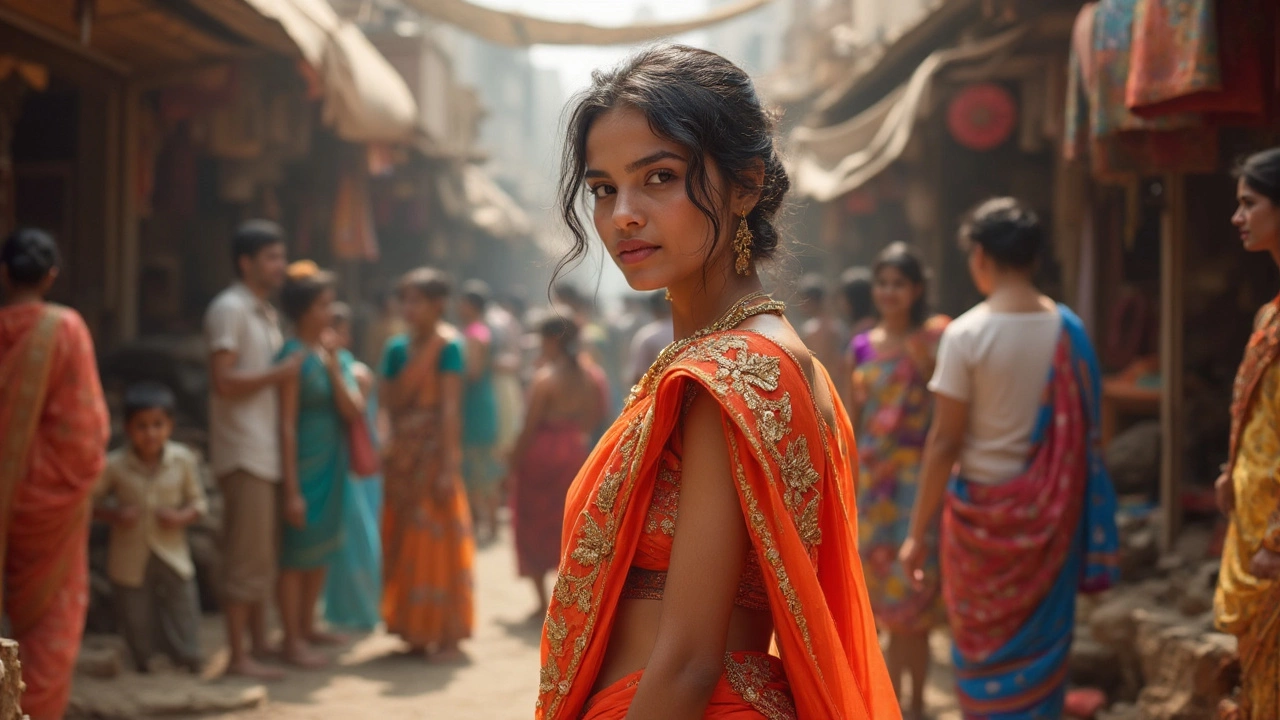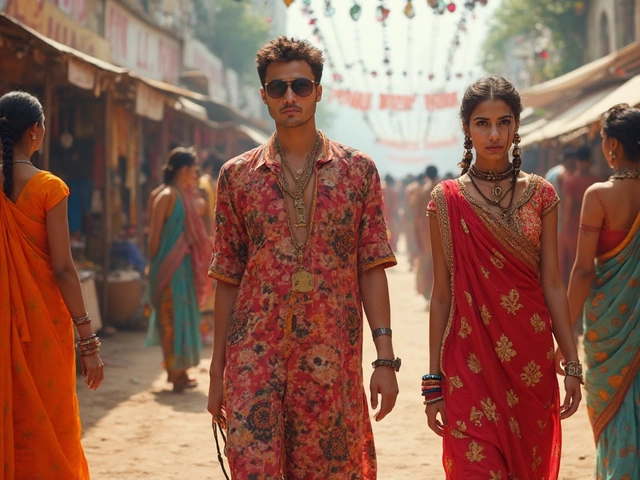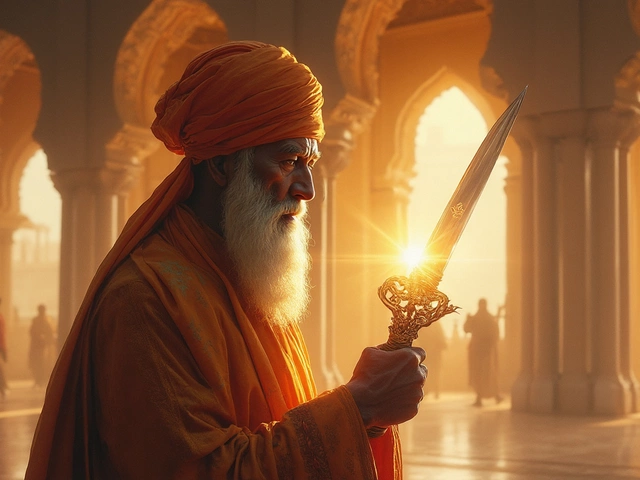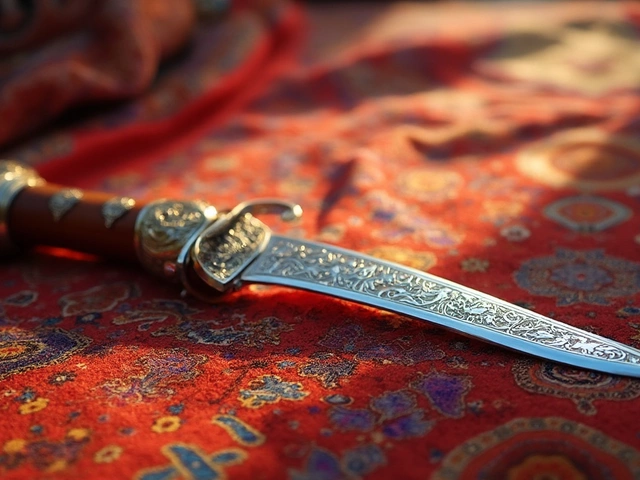When it comes to Indian clothing, there's a tapestry of styles that range from the traditional to the ultra-modern. But if you're talking about what folks wear most often, it's hard to beat the classics. The saree for women and the kurta for men have been beloved for generations. These aren't just relics of the past; they remain a common sight in markets, workspaces, and even at casual gatherings.
Now, why are these outfits so popular? Beyond tradition, it's the comfort and versatility they offer. A saree can be draped in various styles, making it suitable for everything from a day at the office to a wedding reception. Plus, there's no one 'right' way to wear a kurta; it pairs well with jeans if you're feeling the fusion vibe or with traditional pajama pants for a more classic look.
- Traditional Attire Basics
- Popular Women's Clothing
- Common Men's Garments
- Modern Meets Tradition
- Accessorizing the Indian Way
Traditional Attire Basics
In India, traditional clothing is more than just fabric and thread; it's a representation of the country's rich heritage and cultural diversity. Each region has its unique style, but certain garments have become household names across the nation.
The Significance of the Saree
The saree is perhaps the most recognized Indian garment for women. It's a long piece of cloth, usually around six to nine yards, draped gracefully over the body in various styles. It's versatile enough for both everyday wear and special occasions. One intriguing fact is that there are over 80 recorded ways to drape a saree, with region-specific styles adding to its charm.
Traditionally, sarees are woven from silk or cotton, but today you'll find them in fabrics like chiffon or georgette, appealing to modern sensibilities while keeping comfort in mind. Popular styles include the Banarasi from Varanasi, known for its intricate gold and silver brocade, and the Kanjeevaram from Tamil Nadu recognized for its thick silk and rich colors.
The Classic Kurta
For men, the kurta is a staple, characterized by its loose-fitting design that extends to the knees, making it both comfortable and adaptable. Kurtas are often paired with pajama pants or churidars for a traditional look, but they're also worn with jeans in urban settings, blending traditional styles with global influences.
Kurtas come in a multitude of fabrics and designs, from the simple cotton variety perfect for lounging at home to the intricate, embroidered pieces reserved for festivals and weddings. The popularity of the kurta has soared both in India and abroad, making it a go-to wardrobe essential.
Regional Varieties
India's numerous states offer a kaleidoscope of traditional dresses. In Punjab, the vibrant salwar kameez is a favorite among women, while in Rajasthan and Gujarat, the brightly colored and ornamented lehenga choli is common during festivals.
Here's a quick look at some other notable pieces:
- Dhoti: A long piece of cloth traditionally worn by men in rural areas, especially in states like Bihar and Tamil Nadu.
- Choli: The fitted blouse worn with the saree or lehenga.
- Bandhgala: A formal jacket worn by men, popular at weddings.
Although Indian clothing varies widely, it beautifully combines tradition with a touch of modern flair, ensuring its place in wardrobes both at home and around the world.
Popular Women's Clothing
In India's diverse fashion landscape, sarees undeniably take center stage. This six to nine yards of fabric has been an essential part of Indian women's wardrobes for centuries. Each region across the country has its own take on how to drape these, beads and colors. Whether it's the intricate Banarasi silk from Varanasi, the colorful Bandhani from Gujarat, or the lightweight Sambalpuri from Odisha, each saree tells a story of its region.
Another staple for Indian women is the salwar kameez. Originally from the Punjab region, this attire has transcended its origins to become a nationwide favorite. The kameez is essentially a tunic that comes in various lengths, while the salwar is a type of pajama that might be narrow or wide-legged, depending on the style.
Kurtis: The Modern Touch
Everyday wear in cities often includes kurtis, which are shorter versions of kurtas. Kurtas have stood the test of time and seamlessly integrated into contemporary fashion. Pairing these with jeans or leggings is a common style choice, especially among younger women. You can find variations in fabric and embellishments, but the core elements remain rooted in tradition.
Lehenga Choli: The Festive Flair
When it comes to festive or wedding attire, you can't overlook the lehenga choli. Comprising a skirt (lehenga), a fitted blouse (choli), and a dupatta(drapp), this outfit dazzles with its rich embroidery and vibrant colors.
Women’s Clothing Trends Over Time
| Decade | Popular Style |
|---|---|
| 2000s | Churidar with long kameez |
| 2010s | Floor-length anarkalis |
| 2020s | Fusion wear combining Western and Indian styles |
The fusion strategy has opened new doors. Women are now more likely to mix and match Indian textiles with Western cuts, like a block-printed maxi skirt paired with a tank top or a traditional dupatta thrown over a casual tee, bridging traditional charm with modern pragmatism.
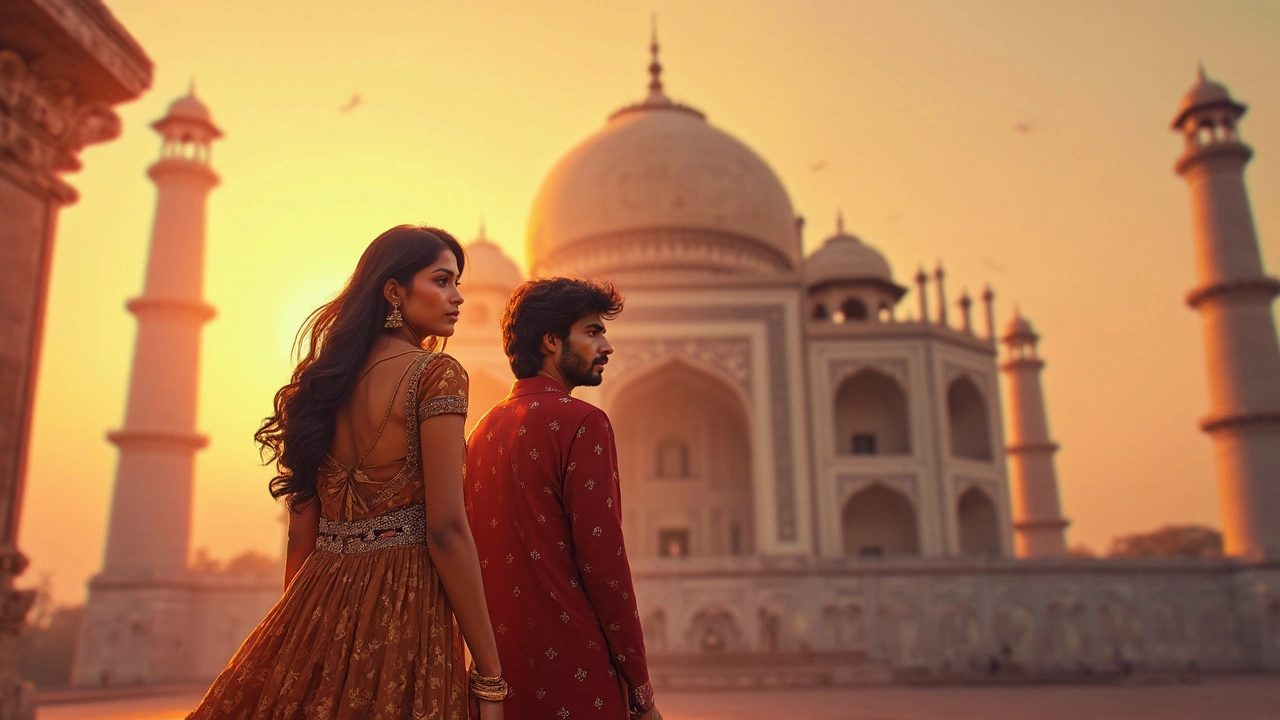
Common Men's Garments
When it comes to men's clothing in India, the choices blend tradition with contemporary styles. Among the staples, the kurta stands out. This tunic-like shirt comes in various lengths and styles, and it's typically paired with pajamas or churidars, but you’ll also see it worn with jeans these days for a modern twist.
The kurta is highly versatile. Why? It's comfortable, low-maintenance, and works for both casual gatherings and formal events. Plus, you can find kurtas in fabrics like cotton for everyday wear and silk or brocade for special occasions.
The Quintessential Dhoti
Another favorite in men's wardrobes is the dhoti. This long, rectangular piece of cloth is tied around the waist, often without any stitching involved. Popular in many states, it carries cultural significance and a sense of pride. Men sport dhotis for festivals, weddings, and other traditional events.
Let's not forget about the *shirt and pant* combo. Although western-style clothes are increasingly common, especially in urban areas, traditional options like the kurta and dhoti remain popular in daily wear, combining comfort and function with cultural roots.
And, just in case you're curious, here’s a quick glance at how often people choose traditional garments over western styles in different settings:
| Setting | Traditional Wear (%) | Western Wear (%) |
|---|---|---|
| Festivals | 90 | 10 |
| Weddings | 85 | 15 |
| Office | 30 | 70 |
In essence, these clothing choices prove that while new trends come and go, the allure of traditional Indian wear for men remains enduring.
Modern Meets Tradition
In India, fashion isn't just about looking good; it's a lively mix of traditions and contemporary influences. While many cherish traditional outfits like the saree and kurta, there's a strong trend of blending these with modern styles. This fusion allows people to honor their heritage while keeping pace with global fashion trends.
One popular fusion style involves pairing a classic saree with a trendy crop top, adding a fresh twist to a familiar look. Another is wearing kurtas with jeans or leggings, providing both comfort and style. These combinations give Indian outfits new life, making them appealing to younger generations who want to maintain cultural ties without sacrificing modern sensibility.
The Global Runway Influence
Modern Indian designers play a big role in this trend, drawing inspiration from both Western trends and traditional Indian textiles. Take, for instance, Manish Malhotra or Sabyasachi, who have earned international acclaim by marrying contemporary designs with traditional craftsmanship.
These designers often showcase collections where traditional fabrics like silk and cotton are reinvented with bold prints and cuts, attracting a global audience and spotlighting Indian fashion on a global stage.
Fashion Statistics
To put things into perspective:
| Year | Market Share of Fusion Wear |
|---|---|
| 2020 | 25% |
| 2025 | Expected to reach 40% |
This growth reflects a broader acceptance of Western influences supplementing traditional garments, influencing how both designers and consumers in India approach clothing.
Ultimately, the beauty of Indian fashion today lies in its adaptability. It's all about creating looks that tell a story—of the person wearing them, of the culture they represent, and of the times we live in. Combined styles not only make fashion more relatable but also encourage self-expression among the wearers.
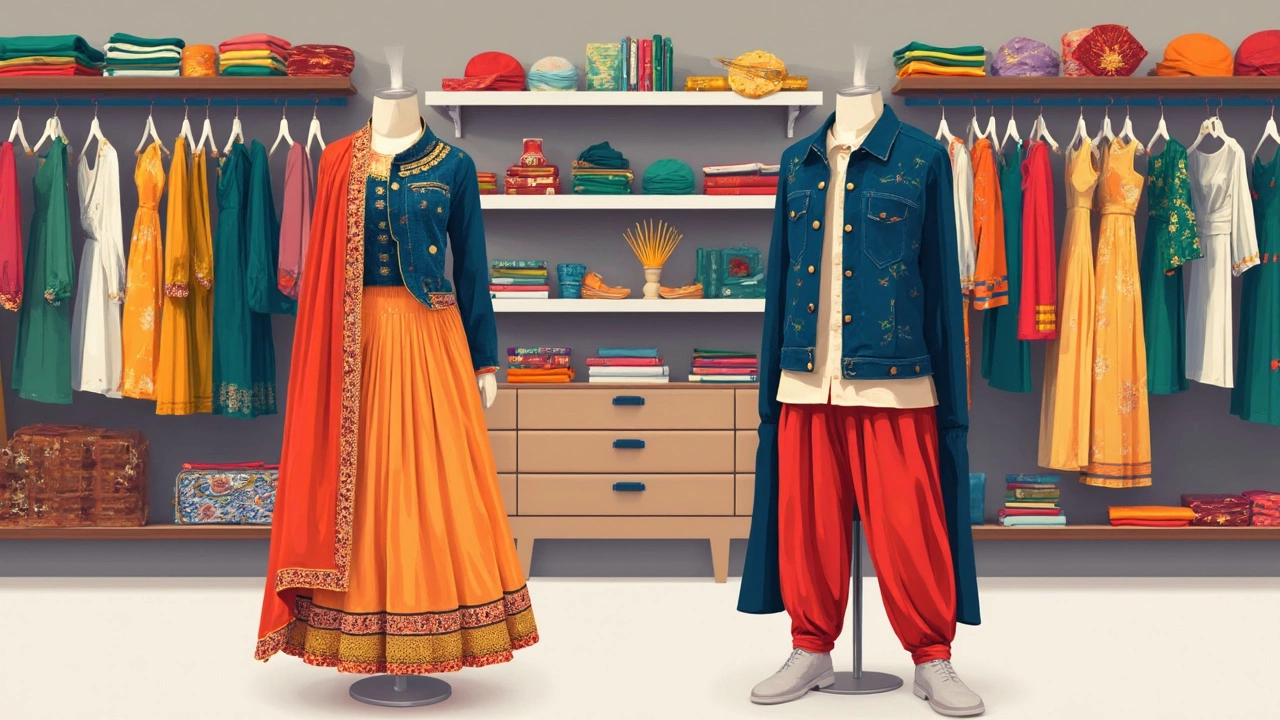
Accessorizing the Indian Way
Let's face it, in India, accessorizing can make or break an outfit. You see, it’s not just about the clothes; it’s the extra touches that bring the whole look together. From chunky bangles to bright scarves, accessorizing is almost an art form here.
Jewelry: More Than Bling
Jewelry is perhaps the most prominent fashion accessory in the Indian wardrobe. Gold holds a special place, often passed down through generations. But don't think it’s just about tradition. Modern designs are popping up everywhere, blending traditional craftsmanship with contemporary aesthetics.
Nose rings and earrings also hold cultural significance. For instance, nose piercings are quite common and are often associated with beauty and elegance. Bangles, made from materials ranging from glass to metal, complete the ensemble for many women.
Scarves and Stoles: Versatile Additions
Whether you're wearing a kurta or a saree, a scarf can add that extra flair. Light cotton stoles are great for summer, while heavier, embroidered ones make a statement in the cooler months. The versatility of a scarf cannot be overstated; it's functional and fashionable.
Shoes: Making Strides
While juttis, traditional Indian shoes, are popular for many occasions, sneakers and sandals have also made their mark. Depending on the occasion, you might find someone pairing a kurta with a sleek pair of loafers or even western-style boots.
Handbags: Essential Companions
When you think of accessories, you can't ignore bags. Be it a modest jhola or a stylish clutch, a handbag is both functional and fashionable. They come in varied designs, sizes, and materials, giving everyone a chance to express their personal style.
So, next time you want to up your style game, remember that adding the right accessories can transform any outfit, whether you're going for a traditional, fusion, or hyper-modern look.
